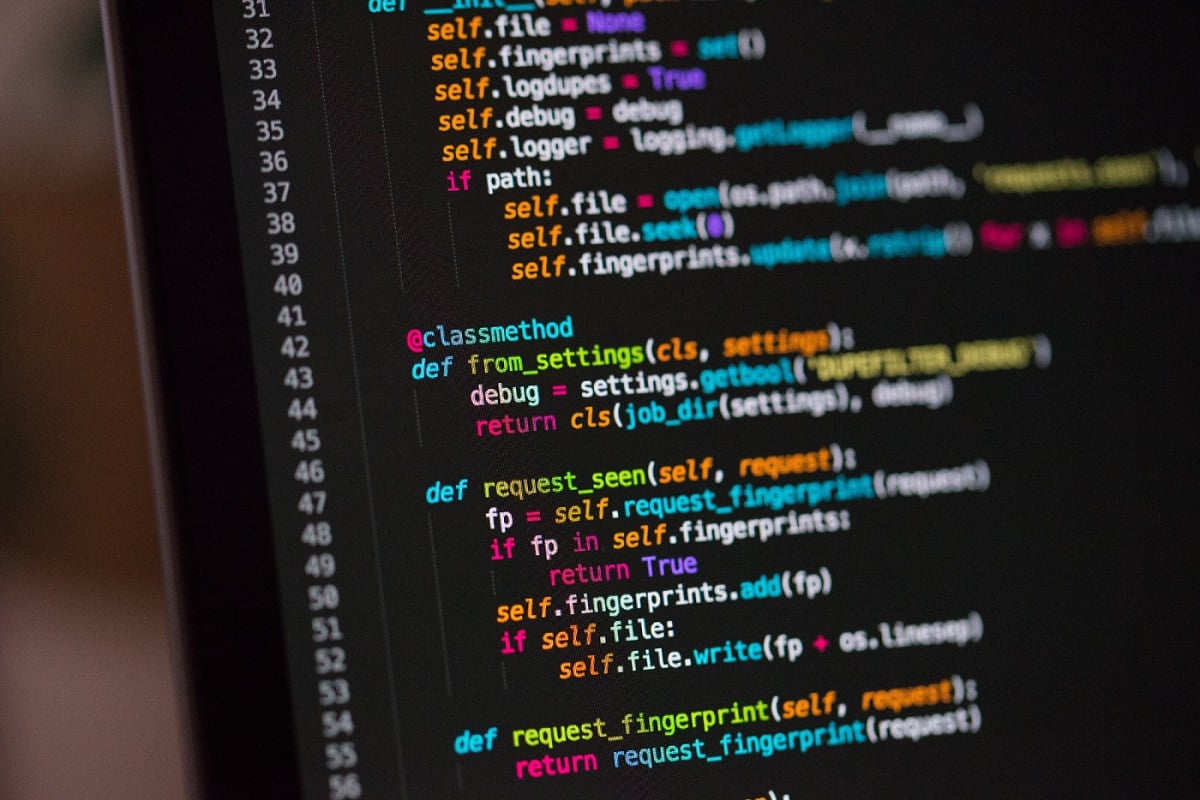Programming Languages: Understanding and Functionality
Programming languages empower electronic devices such as computers and smartphones to comprehend instructions and codes, facilitating the creation of websites, apps, web applications, programs, and platforms widely used globally.
Every website or platform, whether Facebook, Netflix, or the daily-used smartphone video games, originates from code. This underscores the increasing demand for programming skills in today’s completely digitized world.
This guide delves into the essence of programming languages, identifying the most prevalent ones, and suggesting languages to learn in 2022 based on difficulty levels.
Defining a Programming Language
Similar to how humans use language for communication, programmers have devised languages to communicate with computers. In essence, a programming language is a tool used by developers to convert written commands into specific data and activities.

Chris Ried
ABOUT UNSPLASH.
Programming languages primarily serve the development of desktop applications, websites, mobile applications, programs, and enterprise platforms. By writing these codes, ideas can be transformed into machine code, readable by various computer systems. In essence, programming languages instruct computers on what to do and how to do it.

Varieties of Programming Languages
There are over 2,500 programming languages, varying in popularity and usage. They are categorized based on abstraction levels, ranging from machine language to human logical language. The two main categories are:
- Low-level languages: Coinciding with machine language, these offer minimal abstraction and are directly executable by the processor.
- High-level languages: Characterized by high abstraction, these are designed to be more understandable for easier developer use.
Programming paradigms further classify these languages into imperatives (e.g., C, COBOL, Assembly), functionals (e.g., Scala, Clojure, Haskell), and logical (e.g., Prolog, Mercury) languages.
Facilitating Solutions for Developers
In addition to the main categories, there are scripting languages like Javascript, PHP, and Python. These originated to automate lengthy and repetitive tasks through scripts executing specific functions.
Commonly Used Programming Languages
Various rankings, such as TIOBE or PYPL, assess the popularity of programming languages. Some widely used languages and their applications include:
- Python: Renowned for its ease of use, Python is prevalent in artificial intelligence, data analysis, machine learning, web development, and enterprise applications.
- Javascript: Widely used for building interactive websites, applications, and the front-end of the Web, it also runs on various devices and technologies.
- Java: Primarily used for building enterprise applications, Java’s “write once, run anywhere” feature allows it to run on any platform supporting Java.
- C/C++: Among the earliest programming languages, these are fundamental for understanding programming basics and form the basis for modern languages like Python and PHP.
- C#: Developed by Microsoft, C# integrates with .NET software and is employed for game development, server-side programming, and Windows applications.
- PHP: A server-side scripting language, PHP is widely used for creating interactive websites, CMS, e-commerce platforms, and web applications.
- Go: Created by Google, Go combines features from various languages, offering high performance, simplicity, and usability for developing systems and applications.
- Ruby: Open-source and relatively easy to learn, Ruby is extensively used for web application development, with the Ruby on Rails framework enhancing development.
- Swift: Developed by Apple for iOS, macOS, watchOS, and tvOS applications, Swift is known for its efficiency and ease of use.
- SQL: An essential language for interacting with Database Management Systems (DBMS), SQL is crucial for developers working with databases.
These are just a few examples among thousands of programming languages, each serving different purposes.
Choosing a Programming Language for Work
Companies seek developers with diverse skills, from web development to blockchain expertise. Learning programming is becoming more accessible, with various free platforms and courses available. While it’s unnecessary to learn all programming languages, understanding the basics and mastering one language well opens doors to learning others or specific frameworks.

ThisisEngineering RAEng
on Unsplah
In conclusion, the programming language landscape is vast and dynamic, witnessing the emergence and evolution of languages each year, each serving distinct purposes.

